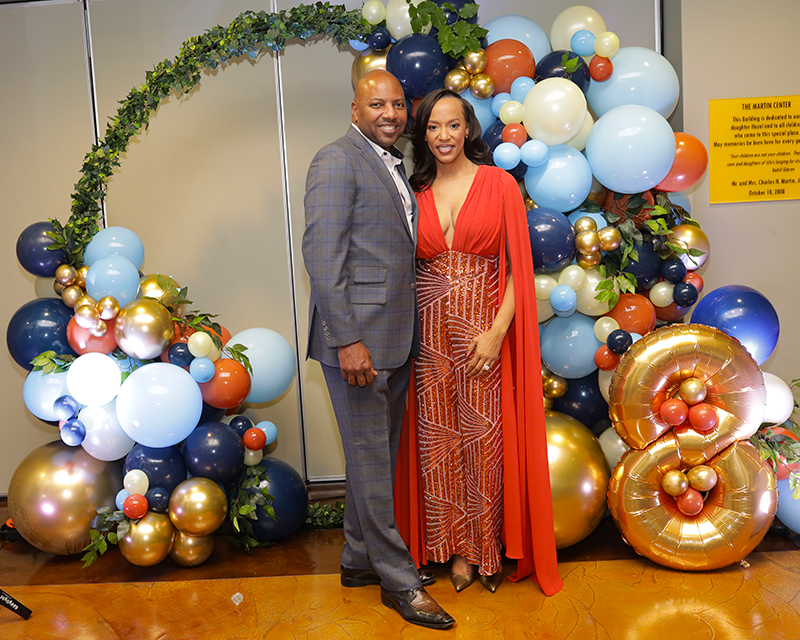
By: Kymberly Amara
Parenthood is often deemed as one of life’s most precious gifts. Still, unfortunately for many, this gift is not possible or not easily accessible to those who may experience fertility issues. Anthony Owens and Perri duGard Owens are all too familiar with this narrative that isn’t often discussed outside of doctor’s offices and specialty clinics. I recently had the opportunity to speak with duGard Owens and her husband about their fertility and adoption journey and their hope to bring more awareness to the alternatives couples can choose from to start or grow their families.
Infertility rates in the U.S. affect one in eight couples or about 6.7 million people nationwide. While 90% of infertility cases are treated successfully through treatments such as drug treatments, reproductive surgery, or methods such as IVF, some couples are still unable to conceive. According to the CDC, infertility is the inability to conceive after a year or more of unprotected sex. Having gotten married older, duGard Owens says they didn’t feel pressured or rushed to start a family. At the beginning of their journey, duGard Owens had a consulting career that was very demanding; the couple chose to let the decision to begin trying for a family come naturally. Once they finally started trying to conceive, duGard Owens admits that although she had a pre-existing condition that would be “a factor” in the couple’s conception journey, she didn’t consider it would impact their chances of getting pregnant the way it did. “I knew coming in that I was polycystic…when we said let’s try…it was like two years, and there was no sign of getting pregnant.”
The Owens decided to consult with their health care providers after unsuccessful attempts to get pregnant to check if either of them had any health-related issues that may be preventing them from getting pregnant. After being prescribed Clomid — a commonly prescribed pill for infertility — by their respective providers, there were still no signs of pregnancy. From there, they were referred to a fertility specialist and decided to pursue IVF but ultimately chose not to pursue intrauterine insemination due to costs that were upwards of $180,000 and the multiple steps involved.
duGard Owens says that it was during this time that she brought up the option of adoption. She was familiar with adoption because several of her childhood friends were adopted. “I always [said] I was open to adoption because I’d grown up with several friends who were adopted, and it was a positive experience as to how their family life and family structure was very healthy.” After six rounds of in-vitro and two miscarriages, all while trying to build a business and navigate the perils of entrepreneurship, the decision to adopt became more and more prevalent. For Mr. Owens, his main objective was to ensure his wife was okay and reassure her that they would be fine. He recalls telling his wife that regardless if they had children, “Having a kid is fine, but at the end of the day, you and I are still going to be here. If we are able to have a family, that’s a plus, but that’s not a deal-breaker.” He recalls the topic of adoption that came up once in 2015 and then again in 2017 after meeting a couple that owned an adoption agency, but they never followed through. Despite building a successful business and being happy with the family they were together, duGard Owens says, “Something kept nagging at me. I still wanted a family.”
Flooded with a roller coaster of emotions that mainly consisted of anger and hurt, after therapy and some self-reflection, duGard Owens says that she let go of the notion that she would be able to carry a child to term. She says she felt like she was giving up despite “trying everything you possibly can” to get pregnant. With a renewed sense and outlook, the couple circled back to adoption. Wanting to help a child that had a similar background and upbringing, duGard Owens says, “There are so many children in the child protective system. We have to think about a child that needs a family and…we started exploring foster care..knowing that we might have one or two placements before we would be considered as adoptive parents…we were very thoughtful about moving into the foster care process.”
Not soon after actively pursuing adoption and beginning classes, COVID happened, forcing them to go virtual. Their instructor soon alerted them to two siblings that they felt would be perfect for them. Things moved quickly, and the Owens began building a relationship with the siblings in July/August of last year. The courts had already begun the process to terminate parental rights of the children’s biological parent(s), a process that typically takes months and can involve a lot of back and forth. The Owens realize that given the speed that things are moving. They are keenly aware that their adoption story isn’t the norm.
Black couples are rare in the foster care system due to a lack of awareness and stigma. More couples like the Owens are needed to adopt Black children, increase representation, raise awareness, and provide information to couples who may find themselves in a similar situation but still desire to have a family. For now, their focus is on getting settled and preparing to finalize the process for the children to come home with them. If all goes well, the children are set to move in by the end of the year. Mr. Owens is hopeful and states, “What God has for us He will give it to us; we just have to be faithful.”

Social Media Contacts
Email | Website | Twitter | LinkedIn
Read more: duGood Work | Recent News







